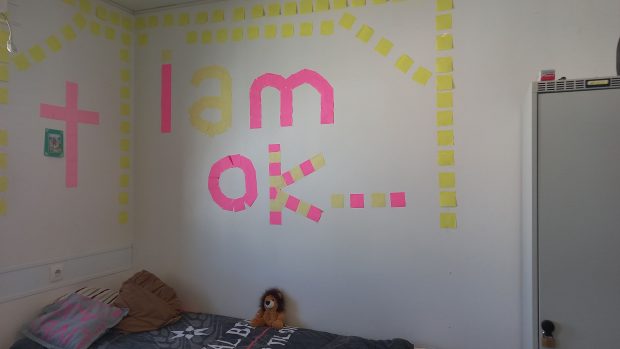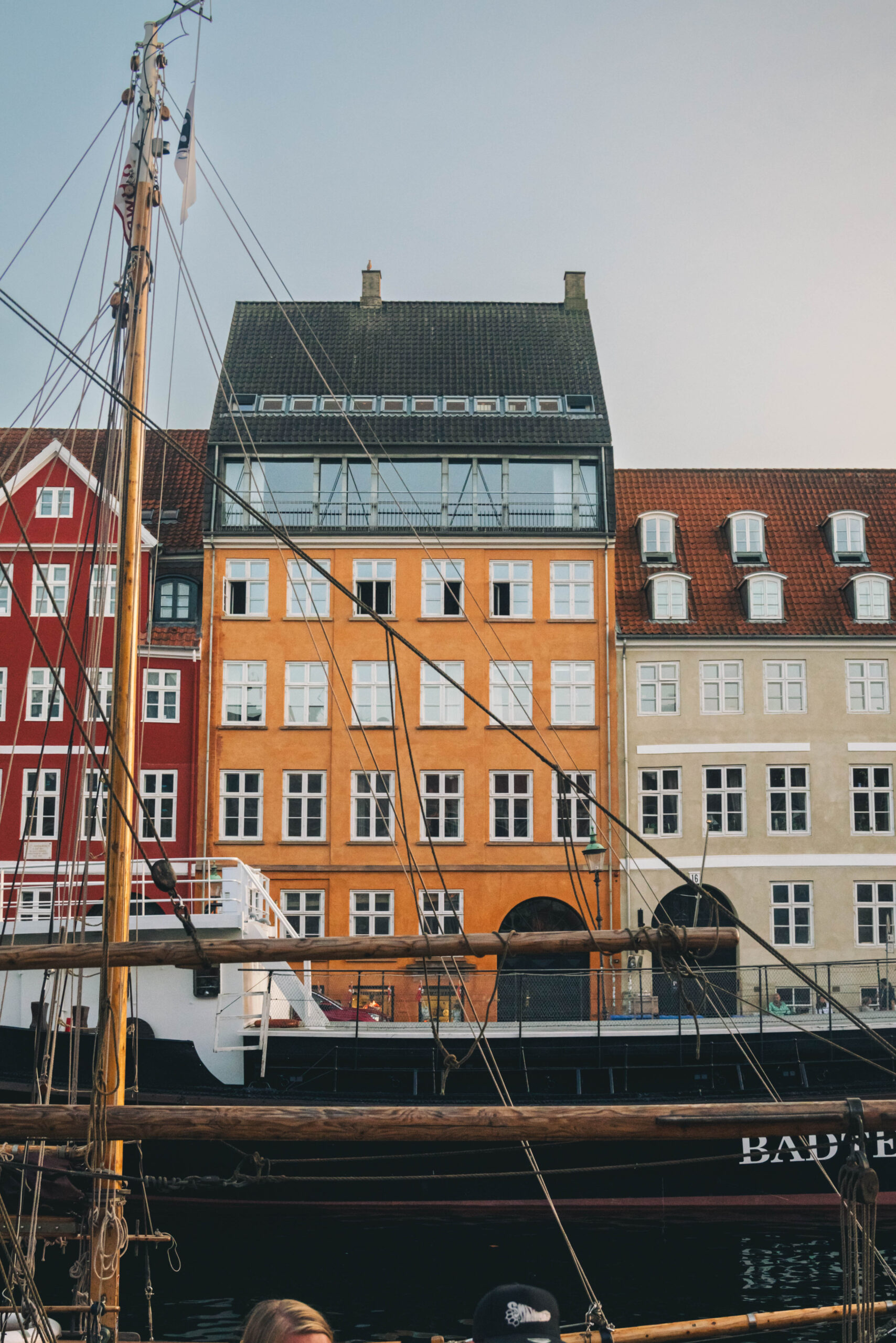Being an agent of your own life is somewhat impossible when you are a rejected asylum-seeker residing at one of Denmark’s deportation centres. Your life is not your own but is rather subject to higher forces: from the security guards at the entrance of the deportation centre to the political authorities who decide your future. Going on a hunger strike remains one of the only forms of agency that you can have.
While the nation feasted
On Christmas Eve of 2021, 31-year-old Jahangir Eliaisi went on a hunger strike to protest against his living conditions in Kærshovedgård, one of Denmark’s deportation centres. Eliasi is a Kurdish Iranian who sought refuge in Denmark back in 2015. After his residency got rejected, the Danish authorities sent him to a deportation centre, and for more than five years, Eliasi has been residing in this camp with little to no hope in sight of his application being reviewed.
“I was silent for many years, but I was suffering. This suffering changed me and I no longer saw life as beautiful,” said Eliasi.
According to a study conducted by Amnesty International Danish Medical Group, detention centers have a negative toll on the residents’ physical and mental health, often causing stress, PTSD and depression. This is also more true for residents who have previously experienced trauma and violence in their lives and have turned to immigration to escape, only to be faced with another form of violence: their detention.
Life without purpose
As the years have passed, Eliaisi’s conditions have worsened to the extent he has been struggling to find value in his life. With each day that passes, his life loses more of its purpose – especially when he cannot see an end to his struggle.
For 110 days, Eliasi cut out all solid foods, consuming only juice and coffee. As his health worsened, he has recently started eating food again, but was left struggling with health complications.
“I spent the days of my hunger strike trembling because I was in so much pain. I cried under my blanket at night until the morning. I was alone, but I told everyone I was fine,” said Eliasi.

A hopeless cause?
With the help of some networks, Eliasi was able to get in contact with a second lawyer and is currently waiting for the possibility of his case being reopened in the coming months.
However, his case is similar to many other Iranians residing at the centre, and their prospects are not good. Out of the many rejected asylum-seekers from different countries at the camp, the majority of them belong to the Kurdish minority group from Iran, as their rejection rate is very high, according to a research report on Danish asylum-seekers.
Additionally, there are no repatriation agreements between Iran and Denmark for the return of the rejected asylum-seekers, making the future of these individuals uncertain and pushing them into the unknown.
Tightened policies
Following the heightened Syrian immigration wave that Denmark witnessed in 2015, the government has decided to decrease the number of refugees and immigrants by tightening immigration policies.
In 2020, the number of applications recorded was only 1,515 compared to over 21,000 applications in 2015. Only 601 applications were approved – the lowest number recorded in 30 years.
The tightening policies have included many different measures such as doubling punishments, taking away resident permits and making departure centres less hospitable. Some of these measures fall under “motivation enhancement measures” and aim to motivate residents to go back to their home country.
Opposed to immigration
Commenting on Denmark’s immigration policies, Lotte Segal, a lecturer in social anthropology at the University of Edinburgh and researcher in migration and displacement, argues that these policies are put in order to stop asylum in Denmark in the long run.
“It’s an attempt at masking the fact that Denmark sees itself as a relatively homogenous country that does not have a long history of dealing with heterogeneity and therefore frames itself as being at sea under the so-called pressure of immigration,” she explained.
“A lot of social science research testifies to the fact that the cultural ethos and values in Scandinavian countries demonstrate that ‘in order to be equal, you have to be the same’. So, equality is associated with sameness. A large influx of people who do not qualify on the surface as being similar – whether due to their skin colour, ethnicity, religion or their experiences – thereby become easy to reject by the Danish state due to a cultural idea of homogeneity as harmony.”

Like prison
Surrounded by metal fences and security guards, Kærshovedgård is a Danish detention centre situated close to Mid Jutland town of Ikast with poor infrastructure and transport connections. Rejected asylum-seekers, deported residents and those on tolerated stay are usually sent to this camp. Inside the camp, there are residential buildings that are divided among men, women and those who have committed crimes. The areas are equipped with video surveillance.
“It is like going to prison in a democracy. It is similar to a prison sentence in the sense that all your movements are surveyed and you are not allowed to take part in everyday sociality without the carceral institution,” said Segal.
Aids criminalisation
Over the past years, the living conditions in the camp have worsened. A report on the motivation enhancement measures in Denmark argues that the political framework and day-to-day practices of deportation centres contributes to the criminalisation of the migrants.
For instance, residents are expected to spend all their nights in the camp and are only allowed to leave with special permission to spend the night outside. Therefore, those who do not report their presence at the camp are punished with prison.
Residents have no right to work and have limited access to activities and healthcare; they also do not have a food allowance and are therefore expected to eat at the centre’s cafeteria during certain times of the day.
Additionally, the asylum cases of these residents are subject to bureaucracy as many residents have reported that their cases have been stalled, delayed, or sometimes even left unopened.
In limbo
“The main problem for these residents is that they can’t go home in their view, and they can’t get access to real life here or in other countries because of the Dublin regulations. They cannot just leave Denmark and apply for asylum in another European country. So, they are kind of stuck in place,” said Katrine Syppli Kohl, a researcher in migration studies.
According to Kohl, many people at the departure centers leave and feed into the cycle of illegal paperless existence in Europe.
“Some go to other European countries, and some others are probably underground in Denmark. This is also a miserable way of living because you tend to be exploited in the labour market, always afraid of being caught, and most probably not have access to healthcare and social benefits. So basically, they have to choose between a range of bad solutions,” concluded Kohl.
The story of Jahangir’s hunger strike challenges the concept of democracy in Denmark: is democracy accessible and inclusive to all or are only certain groups entitled to it? Inside the fences of Denmark’s deportation centres, the light at the end of the tunnel keeps getting dimmer, and going on a hunger strike becomes the only way to rekindle it.
















